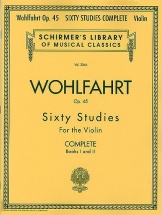César-Auguste-Jean-Guillaume-Hubert Franck (1822 –
1890) was a composer, pianist, organist, and music
teacher who worked in Paris during his adult life. He
was born at Liège, in what is now Belgium (though at
the time of his birth it was part of the United Kingdom
of the Netherlands). He gave his first concerts there
in 1834 and studied privately in Paris from 1835, where
his teachers included Anton Reicha. After a brief
return to Belgium, and a disastrous reception to an
early oratorio Ruth...(+)
César-Auguste-Jean-Guillaume-Hubert Franck (1822 –
1890) was a composer, pianist, organist, and music
teacher who worked in Paris during his adult life. He
was born at Liège, in what is now Belgium (though at
the time of his birth it was part of the United Kingdom
of the Netherlands). He gave his first concerts there
in 1834 and studied privately in Paris from 1835, where
his teachers included Anton Reicha. After a brief
return to Belgium, and a disastrous reception to an
early oratorio Ruth, he moved to Paris, where he
married and embarked on a career as teacher and
organist. He gained a reputation as a formidable
improviser, and travelled widely in France to
demonstrate new instruments built by Aristide
Cavaillé-Coll.
In the park facing the suburban Paris basilica of
Sainte-Clotilde, where Franck was organist for 32
years, there is a memorial sculpture by Alfred Lenoir,
which places the composer before the manuals, head
bowed, rapt in meditation as an angel, shielding him
with outspread wings, whispers. Indeed, Franck's best
music often evokes the voices of angels, a sense of
being suspended (as he was in the organ loft) between
earth and heaven, the worldly and the divine. Hence,
the "serene anxiety" which the critic, Georges-Jean
Aubry, attributed to him. In the Trois Chorals, his
final work, this mystical hovering attains its most
richly compelling form.
At the suggestion of the publisher, Auguste Durand,
Franck began the Chorals while on summer holiday at
Nemours and completed them on his return to Paris --
the third and last choral is dated September 30, 1890.
On October 2, he played them on a piano for his organ
class at the Conservatoire -- which included Vierne and
Tournemire -- with his last student, Guillaume Lekeu,
taking the pedal part. An accident the preceding May,
in which Franck had been struck in the chest by an
omnibus, had left him weakened. A chill taken at the
beginning of October soon turned to pleurisy, but he
insisted on returning to the loft of Sainte-Clotilde on
October 20 to determine the registration of the
Chorals. He came home to take to his bed, his condition
wavering, his mind deliriously occupied with a fugue,
and died on the morning of November 8.
The formal plan of the first, E major Choral has been
the subject of debate; the difficulty lies in
attempting to equate what Franck has actually done with
pre-existing models. Franck himself tried to explain to
his students that "You will see, the Choral is not the
thing itself -- the true choral becomes in the course
of the work." It opens with a flood of melody which
Vincent d'Indy analyzed into seven thematic cells, of
which, only the last -- a six bar phrase -- resembles
what J. S. Bach would have understood as "choral." The
work proceeds through an ever more fantastic,
chromatically saturated series of contrapuntal
variations, in which one or another of the cells
informs every voice, imparting a polyphonic
incandescence, transcending mere punctus contra punctus
cleverness, until the Bach-like fragment stands forth
tutta forza and exultant.
The B minor Choral is a free passacaglia, through which
the travails of faith take on virtuoso swagger to end
with hard-won tranquillity. Opening with toccata-like
brilliance, the third, A Minor Choral introduces a
proper four-voice choral which eventually subdues the
coruscations before rising in great arpeggiated chords
to a central dolce espressivo cantilena. This
incantatory stream of liquid silver pours forth like
ardent prayer, with growing modulatory and contrapuntal
involvement until it attains a great, pedal-underlined
slargando climax. The flickering scintillations of the
opening return, surmounted by the choral and subdued
again to a docile accompaniment. Wrought to a
suspenseful coda, it ends on a triumphant A major
tierce de Picardie.
Source: AllMusic
(https://www.allmusic.com/composition/chorals-3-for-org
an-fwv-38-40-mc0002494556 ).
Although originally created for Pipe Organ, I created
this Interpretation of the Choral in A Minor (FWV 40 No
3) for String Quartet (2 Violins, Viola & Cello).






